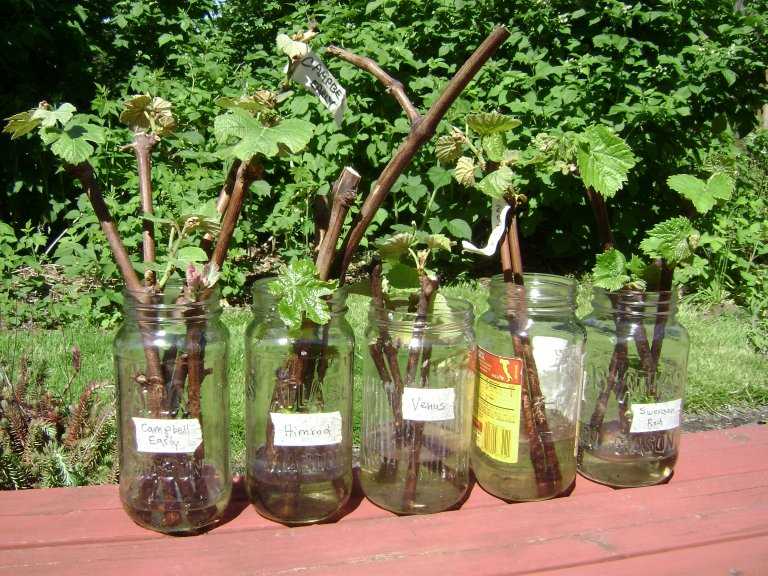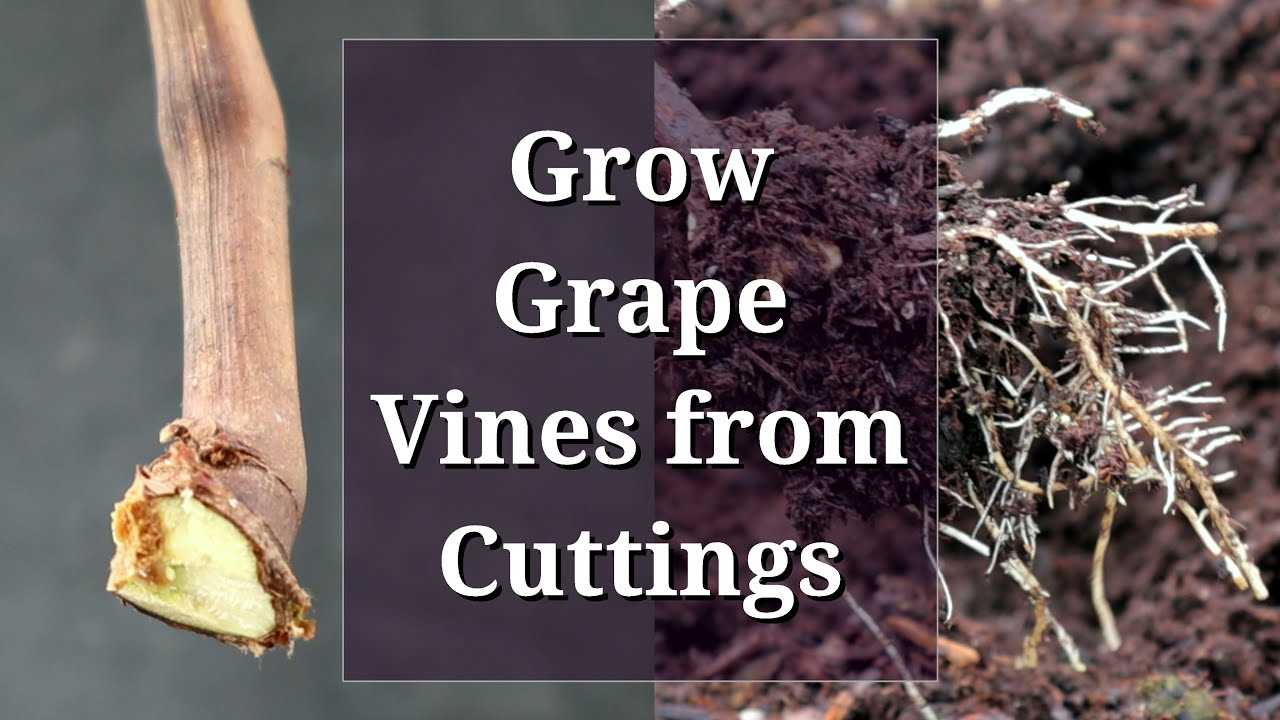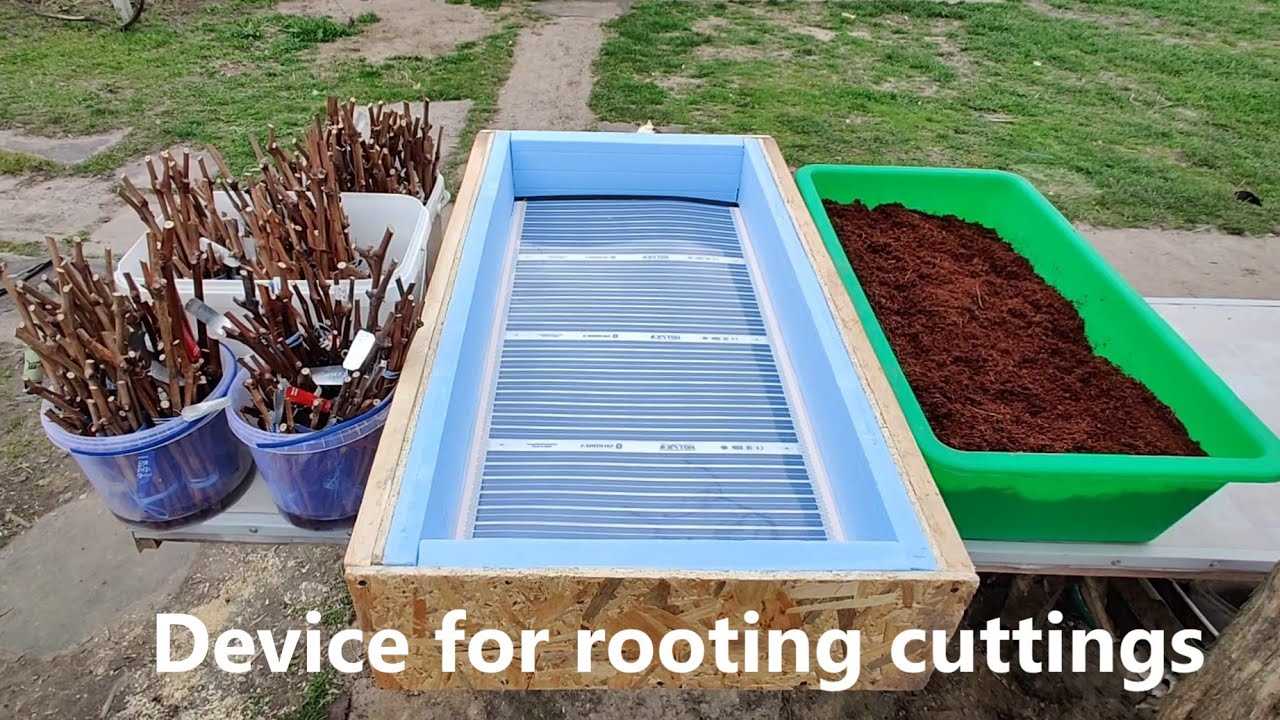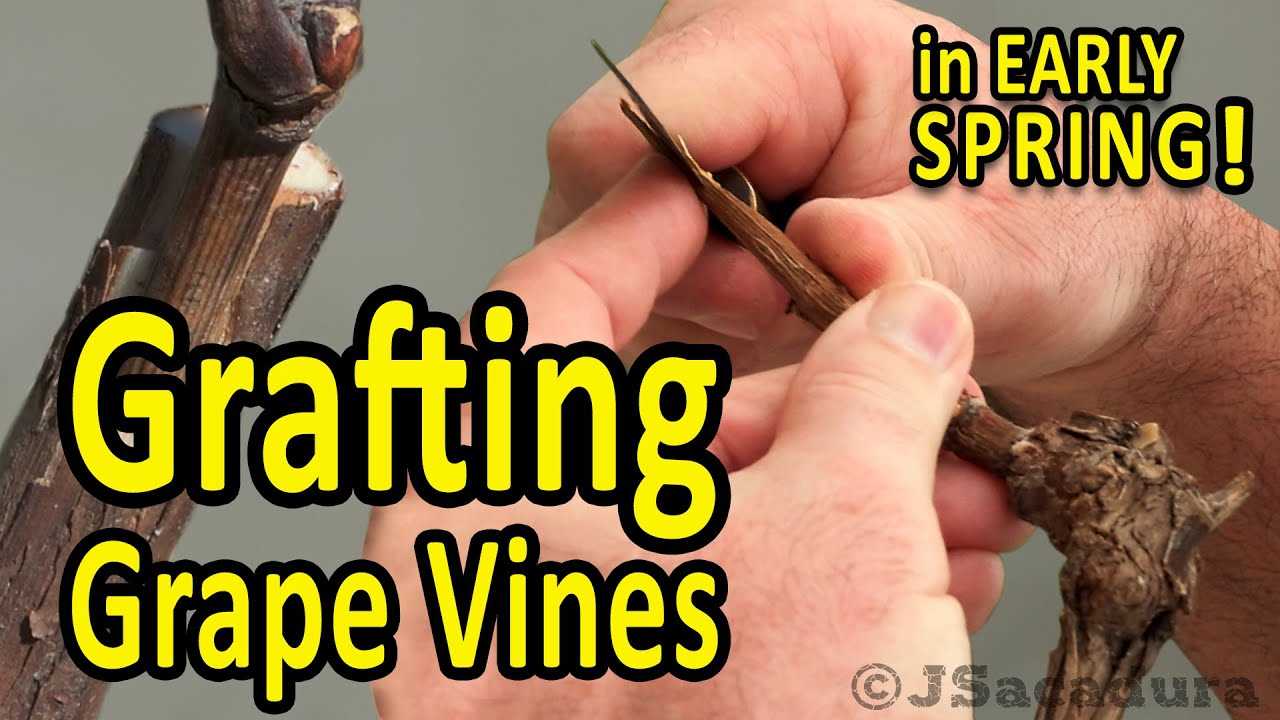- What is Rooting Grapes?
- The Burrito Method: A Step-by-Step Guide
- Introduction
- Materials Needed
- Step 1: Prepare the Grape Cuttings
- Step 2: Wrap Cuttings in Damp Paper Towels
- Step 3: Seal in Plastic Bag
- Step 4: Provide Indirect Light
- Step 5: Maintain Moisture
- Step 6: Wait for Roots to Develop
- Step 7: Transplant into Containers
- Step 8: Provide Care and Maintenance
- Conclusion
- Selecting the Right Grape Variety
- Providing Optimal Growing Conditions
- 1. Temperature and Humidity:
- 2. Light:
- 3. Soil:
- 4. Watering:
- 5. Nutrients:
- 6. Protection from Pests and Diseases:
- 7. Supportive Structures:
- Monitoring and Maintaining the Rooting Process
- Promising Initial Outcomes: How to Measure Success
- 1. Root Growth
- 2. Leaf Development
- 3. Shoot Growth
- 4. Overall Plant Health
- 5. Survival Rate
- 6. Timeframe
- Question-answer:
- What is the Burrito Method for rooting grapes?
- Why is the Burrito Method effective for rooting grapes?
- What materials do I need to root grapes with the Burrito Method?
- How long does it take for grape cuttings to root using the Burrito Method?
- What are some signs that grape cuttings are successfully rooting?
- Can I root grapes using the Burrito Method during any season?
- Video: Simple method propagate grape tree with banana,, growing grape tree from grape fruit for beginners
Grapes are a popular and delicious fruit that can be grown in many regions. While buying grape vines from a nursery is one option, rooting grapes from cuttings can be a rewarding and cost-effective way to start your own grape vines. In this step-by-step guide, we will show you how to root grapes using the Burrito Method, a technique that has been gaining popularity among grape enthusiasts.
The Burrito Method involves creating a conducive environment for the grape cuttings to develop roots by enclosing them in a moist and protective casing. This method has shown promising initial outcomes, with many gardeners successfully rooting grape cuttings using this technique.
To begin, you will need healthy grape cuttings from a mature grapevine. It is recommended to take cuttings in the late winter or early spring when the grapevine is in a dormant state. Make sure to select cuttings that are about 12-18 inches long and have at least three to four nodes. Nodes are the areas where leaves or branches grow.
Once you have your grape cuttings, it’s time to start the Burrito Method. First, moisten a handful of peat moss or potting soil until it is damp but not soaking wet. Lay the dampened soil or moss out onto a sheet of plastic wrap or a damp towel, creating a thin layer. Gently and carefully place your grape cuttings on top of the soil or moss, making sure to position them horizontally with the buds facing up. Space the cuttings about an inch apart.
Next, carefully fold the edges of the plastic wrap or towel over the grape cuttings, creating a burrito-like enclosure. Make sure the cuttings are securely wrapped, but not too tightly. The goal is to create a moist and protected environment for the cuttings to develop roots.
Now, place the wrapped grape cuttings in a warm and humid location. You can use a greenhouse, a covered porch, or even a plastic bag to create a mini greenhouse effect. Keep the grape cuttings in a bright but indirect light area, and make sure the soil or moss stays damp. Avoid overwatering as this can lead to rotting.
Pro Tip: It’s important to check the cuttings regularly for any signs of mold or rot. If you notice any issues, unwrap the cuttings and discard any affected ones. Re-wrap the remaining healthy cuttings in fresh soil or moss.
After a few weeks, you should start to see small roots sprouting from the nodes of the grape cuttings. This is a promising sign of successful rooting. Once the roots reach about an inch in length, you can carefully transplant the rooted grape cuttings into pots or directly into the ground, depending on your gardening setup and climate.
Rooting grapes with the Burrito Method can be a fun and satisfying endeavor for grape enthusiasts. Not only does it allow you to propagate your own grape vines, but it also provides an opportunity to experiment with different grape varieties. Give this step-by-step guide a try, and you may soon be enjoying the fruits of your labor as your rooted grape cuttings grow into thriving grape vines.
What is Rooting Grapes?
Rooting grapes is a process of growing new grape plants from cuttings or vine segments. It is a common method used to propagate grape plants and is particularly useful for creating new varieties or expanding an existing vineyard. Rooting grapes allows for the replication of desired characteristics and traits, such as disease resistance or fruit quality, by utilizing a healthy and established parent plant.
The goal of rooting grapes is to encourage the development of roots from the cutting or vine segment, which can then grow into a new plant. This is achieved by carefully preparing the cutting and providing it with optimal conditions for root growth, including the right soil mix, moisture levels, and temperature.
Rooting grapes can be done using various methods, including the burrito method, which involves wrapping the cutting in a moist substrate to maintain humidity and promote root development. By following a step-by-step process, individuals can successfully root grapes and establish new plants that can eventually be transplanted into the ground or grown in containers.
Overall, rooting grapes is an essential technique for grape growers and enthusiasts who want to propagate their favorite grape varieties or experiment with creating new ones. It offers a cost-effective and efficient way to expand grape cultivation and maintain genetic diversity in the vineyard.
The Burrito Method: A Step-by-Step Guide
Introduction
The burrito method is a simple and effective way to root grapes, allowing you to grow new plants from cuttings. This method involves wrapping grape cuttings in damp paper towels and sealing them in a plastic bag, creating a humid environment that encourages root growth. By following this step-by-step guide, you can easily root grapes using the burrito method.
Materials Needed

- Grape cuttings
- Damp paper towels
- Plastic bags
- Planting trays or containers
- Rooting hormone (optional)
- Watering can or spray bottle
- Grow lights or sunny window
Step 1: Prepare the Grape Cuttings
Start by taking 6- to 8-inch long grape cuttings from a healthy grapevine. Make the cut just below a bud node, and remove any leaves from the bottom half of the cutting. If desired, you can dip the cut end in rooting hormone to promote root development.
Step 2: Wrap Cuttings in Damp Paper Towels
Moisten a paper towel with water, making sure it is damp but not dripping wet. Place the grape cuttings on the damp paper towel, spacing them out evenly. Fold the paper towel over the cuttings, covering them completely.
Step 3: Seal in Plastic Bag
Transfer the wrapped grape cuttings into a plastic bag. Make sure the bag is large enough to accommodate the cuttings without crowding them. Seal the bag tightly, trapping the moisture inside and creating a mini greenhouse environment.
Step 4: Provide Indirect Light
Place the sealed plastic bag in a location with indirect light. Avoid direct sunlight, as it can overheat the cuttings and damage them. Alternatively, you can use grow lights if you have them available.
Step 5: Maintain Moisture
Check the plastic bag periodically to ensure that the paper towel remains damp. If it starts to dry out, lightly mist it with water using a spray bottle or carefully pour a small amount of water into the bag. Do not overwater, as excessive moisture can cause rot.
Step 6: Wait for Roots to Develop
Be patient and allow the grape cuttings to develop roots. This can take several weeks or even months, depending on the grape variety and growing conditions. Check for root growth by gently tugging on the cuttings. If you feel resistance, roots have likely formed.
Step 7: Transplant into Containers

Once roots have developed, it’s time to transplant the rooted grape cuttings into individual planting containers or trays. Fill the containers with potting soil, make a small hole in the soil, and gently place each cutting into its own hole. Firmly press the soil around the cutting to secure it in place.
Step 8: Provide Care and Maintenance
Place the planted grape cuttings in a location with bright, indirect light. Water the cuttings regularly, keeping the soil moist but not waterlogged. Monitor the growth and continue to provide care as needed.
Conclusion
The burrito method is a reliable and straightforward way to root grapes from cuttings. By following these step-by-step instructions, you can successfully grow new grape plants and expand your grapevine collection. Remember to be patient, as root development can take time. With proper care and maintenance, your rooted grape cuttings will thrive and produce delicious grapes for years to come.
Selecting the Right Grape Variety
When it comes to selecting the right grape variety for rooting, there are a few factors to consider. These include:
- Climate: Different grape varieties have different climate requirements. Some varieties thrive in warm, sunny climates, while others prefer cooler temperatures. Consider the climate of your region and choose a grape variety that is suitable for your specific climate.
- Soil Conditions: Grapevines require well-draining soil that is rich in organic matter. Before selecting a grape variety, assess the soil conditions in your garden or vineyard. If the soil is heavy clay or poorly drained, you may need to amend it to create better growing conditions for your grapes.
- Purpose: Decide whether you are growing grapes for eating, winemaking, or both. Different grape varieties have different flavors, textures, and characteristics, making them more suitable for specific purposes. For example, some varieties are known for their sweet, juicy berries, while others are prized for their tannin content and suitability for winemaking.
- Resistance to Diseases and Pests: Some grape varieties are more resistant to common diseases and pests, such as powdery mildew, downy mildew, and grapevine leafhoppers. Consider choosing a variety that has good resistance to these challenges to reduce the need for chemical treatments.
By considering these factors, you can choose the right grape variety for your specific growing conditions and desired outcome.
Providing Optimal Growing Conditions
To ensure the successful rooting of grapes using the Burrito Method, it is important to provide optimal growing conditions. This will help create an environment where the grape cuttings can develop strong roots and grow into healthy plants. Here are some key factors to consider:
1. Temperature and Humidity:
Grapes thrive in temperatures between 60-75°F (15-24°C) during the day and 50-60°F (10-15°C) at night. Maintaining consistent temperatures within this range is crucial for successful root formation. Additionally, humidity levels between 70-80% will help prevent the cuttings from drying out.
2. Light:
Place the grape cuttings in a location that receives bright but indirect sunlight. Direct sunlight can be too intense and might cause the cuttings to dry out. A bright and airy spot indoors or a partially shaded area outdoors will provide the necessary light for root development.
3. Soil:
Choose a well-draining soil mix that is rich in organic matter. Grapes prefer loamy soil with good water retention capabilities. Avoid heavy clay or sandy soils, as they can obstruct root development and cause waterlogging or excessive drainage.
4. Watering:
Keep the soil consistently moist, but not soggy, throughout the rooting process. Water the grape cuttings regularly, making sure not to overwater or allow the soil to dry out completely. Proper hydration is essential for the growth of healthy roots.
5. Nutrients:
Provide the grape cuttings with a balanced liquid fertilizer or a slow-release granular fertilizer specifically formulated for grapes. This will ensure they have access to essential nutrients for healthy growth. Follow the manufacturer’s instructions for application rates and frequency.
6. Protection from Pests and Diseases:
Monitor the grape cuttings for any signs of pests or diseases. Common issues include aphids, mites, fungal infections, and powdery mildew. Take preventive measures such as regular inspections, proper sanitation, and the use of organic or chemical treatments as necessary.
7. Supportive Structures:
As the grape cuttings develop roots and grow into plants, provide them with sturdy support structures such as trellises or stakes. This will help train the vines and ensure proper growth and development.
By providing optimal growing conditions, you can significantly increase the chances of successful root formation and the production of healthy grape plants using the Burrito Method.
Monitoring and Maintaining the Rooting Process
Monitoring and maintaining the rooting process is crucial for the successful growth of grapes. Here are some important steps to ensure the best results:
- Regularly check the moisture level: It is important to keep the rooting medium damp but not overly wet. Check the moisture level every day and adjust watering accordingly.
- Provide proper lighting: Place the rooting container in a sunny location where it can receive at least 6-8 hours of direct sunlight per day. If natural light is not available, you may consider using grow lights or fluorescent lights.
- Ensure adequate ventilation: Proper air circulation is essential for root development. Avoid placing the rooting container in a closed or stuffy area. Make sure there is some airflow around the container.
- Protect from extreme temperatures: Grapes prefer moderate temperatures between 60-80°F (15-27°C). Avoid exposing the rooting container to extreme cold or heat as it can affect root growth.
- Monitor for pests and diseases: Regularly inspect the plants for any signs of pests or diseases. Common pests include aphids, spider mites, and mealybugs. If you notice any issues, take appropriate measures to control them.
- Patience is key: It takes time for the roots to develop fully. Be patient and avoid disturbing the rooting process unnecessarily. Avoid moving or transplanting the rooted cuttings too early.
By following these monitoring and maintenance steps, you can ensure a successful rooting process and increase the chances of healthy growth for your grape plants.
Promising Initial Outcomes: How to Measure Success
Measuring the success of your grape rooting process is essential to understand how well your plants are progressing and to identify any areas that may need improvement. Here are several key factors to consider when measuring the success of your rooting process:
1. Root Growth

One of the most obvious indicators of successful grape rooting is the development of a strong and healthy root system. When assessing root growth, look for roots that are long, well-branched, and have a white or off-white color. Avoid plants with roots that are thin, discolored, or show signs of decay.
2. Leaf Development

Another important measure of success is the development of healthy and vibrant leaves. The leaves should be green, full-bodied, and free from any signs of wilting or discoloration. A well-developed leaf canopy indicates that the plant is receiving adequate nutrients and is able to support its growth.
3. Shoot Growth
Assess the growth of shoots or stems to determine the success of your rooting process. Look for strong and vigorous shoots that are thick, straight, and have a healthy green color. Avoid plants with weak or stunted shoots, as these may indicate insufficient root development or nutrient deficiencies.
4. Overall Plant Health

The general health of the plant is a holistic measure of success. Look for signs of overall vigor, such as a sturdy stem, good leaf-to-stem ratio, and absence of pests or diseases. A healthy plant is more likely to continue growing and thriving in the long run.
5. Survival Rate
Measuring the survival rate is crucial to understanding the success of your rooting process. Calculate the percentage of plants that have successfully rooted and survived. A higher survival rate indicates a more successful rooting process, while a lower rate may suggest issues with the technique or environmental factors that need to be addressed.
6. Timeframe
Consider the timeframe in which the rooting process took place. Success can also be measured by the efficiency of the method used. If you were able to achieve promising initial outcomes within a reasonable timeframe, it indicates that your rooting technique was successful.
By considering these factors and regularly monitoring your grape plants, you can measure the success of your rooting process and make any necessary adjustments to improve the overall outcome.
Question-answer:
What is the Burrito Method for rooting grapes?
The Burrito Method is a technique for rooting grapes that involves wrapping the cuttings in damp paper towels and placing them in a sealed plastic bag to create a moist, humid environment for root development.
Why is the Burrito Method effective for rooting grapes?
The Burrito Method is effective for rooting grapes because it creates a controlled, moist environment that encourages the growth of roots. The paper towels help retain moisture, while the plastic bag creates a sealed, humid environment that promotes root development.
What materials do I need to root grapes with the Burrito Method?
To root grapes with the Burrito Method, you will need grape cuttings, damp paper towels, plastic bags, and a knife or pruners to cut the grape cuttings.
How long does it take for grape cuttings to root using the Burrito Method?
The time it takes for grape cuttings to root using the Burrito Method can vary, but it typically takes several weeks to a few months. The exact timing will depend on factors such as the grape variety, environmental conditions, and the health of the cuttings.
What are some signs that grape cuttings are successfully rooting?
Some signs that grape cuttings are successfully rooting include the appearance of new growth, the presence of white, fibrous roots, and an overall healthy, vibrant appearance of the cutting. It’s important to regularly check the cuttings for these signs of root development.
Can I root grapes using the Burrito Method during any season?
The Burrito Method can be used to root grapes during any season, but it may be most successful during the spring or summer when the grape vines are actively growing. Rooting cuttings during these seasons can take advantage of the natural growth cycle of the grape plant.







